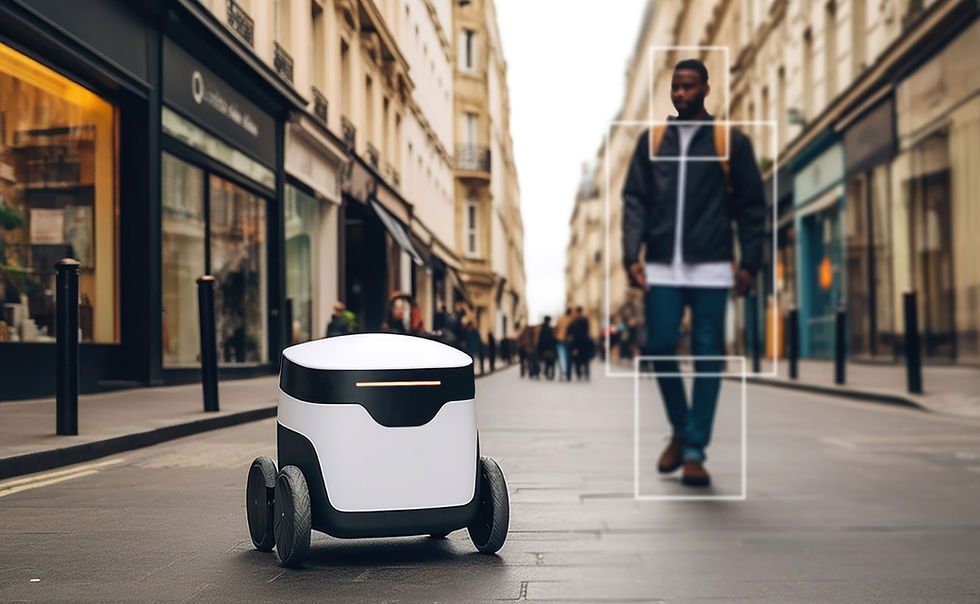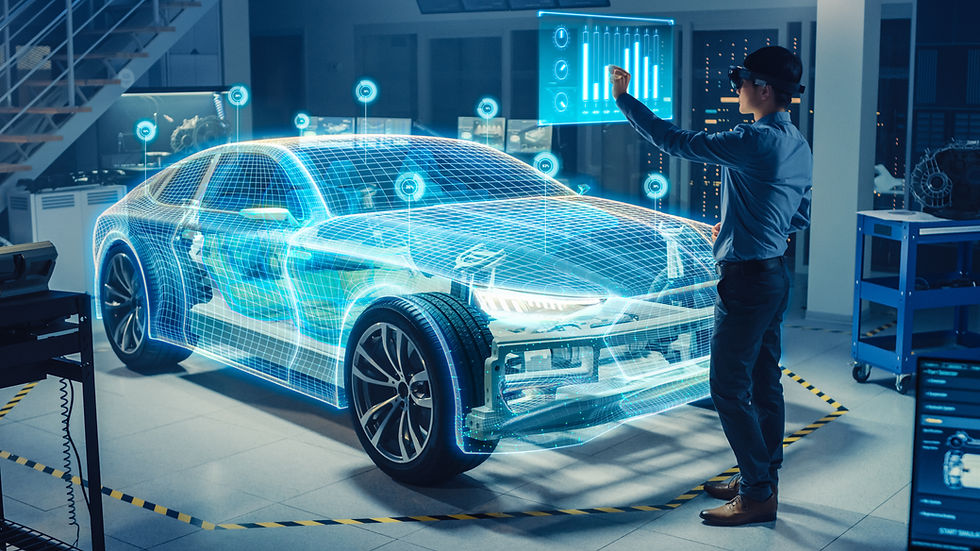Driving Innovation: Generative AI in Automotive Research and Development
- Shreshth Virmani
- Aug 24, 2023
- 2 min read

In the dynamic landscape of automotive research and development (R&D), a new era of innovation is unfolding—Generative Artificial Intelligence (AI) is redefining the way vehicles are conceptualized, designed, and tested. This article takes you on a transformative journey through the realm of automotive R&D, unveiling how the fusion of cutting-edge technology and data-driven insights is reshaping the way manufacturers engineer vehicles, optimize performance, and anticipate market demands. From accelerated design iterations to predictive simulations, Generative AI is propelling a future where automotive R&D is not just efficient but also highly innovative.
Introduction: Generative AI's Impact on Automotive R&D
Automotive R&D is a cornerstone of innovation, and Generative AI is revolutionizing the very essence of how vehicles are created. Generative AI stands as a beacon of progress, collaborating with engineers, designers, and R&D teams to redefine the boundaries of automotive ingenuity. By harnessing AI-driven algorithms and predictive modeling, Generative AI is altering the course of R&D by offering rapid insights, driving innovation, and shaping the future of mobility.
Accelerated Design Iterations: From Concept to Reality
At the core of Generative AI's role in automotive R&D lies accelerated design iterations. Traditionally, the design process involves multiple iterations, consuming significant time and resources. Generative AI transforms this process by generating a multitude of design possibilities based on specified parameters. This not only expedites the design phase but also uncovers innovative solutions that might have been overlooked through traditional methods.
Performance Optimization: Enhancing Vehicle Dynamics
Optimizing vehicle performance reaches new heights with AI precision. Generative AI analyzes data on vehicle dynamics, aerodynamics, and powertrain configurations to suggest design modifications that enhance performance, efficiency, and overall driving experience.
Predictive Simulations: Anticipating Real-World Outcomes
Predictive simulations enter a realm of accuracy with AI-driven insights. Generative AI processes real-world data, weather conditions, and terrain specifics to simulate vehicle behavior accurately. This enables engineers to anticipate how a vehicle will perform in diverse scenarios, from extreme weather conditions to challenging terrains.
Market Demand Anticipation: Navigating Trends
Anticipating market demands gains sophistication through AI foresight. Generative AI analyzes market trends, customer preferences, and emerging technologies to suggest innovative features and designs that align with future consumer needs.
Technology Company's Role: Transforming R&D Landscape
Technology companies play a pivotal role in this transformation. They collaborate with
automotive manufacturers to integrate Generative AI into design and simulation platforms, enhancing design exploration, performance optimization, and predictive insights. This partnership ensures that AI becomes a driving force in shaping the future of automotive R&D.
Data-Driven Decision Making: Guiding Innovation Strategies
Generative AI empowers decision-making processes. By analyzing vast amounts of data on vehicle performance, consumer preferences, and emerging technologies, AI generates insights that guide innovation strategies, from concept ideation to feature implementation.
Ethical Considerations: Navigating AI's Impact on Design
As Generative AI transforms automotive R&D, ethical considerations emerge. Ensuring AI-generated designs align with safety standards, addressing concerns of design originality and human intervention, and maintaining the human touch in design are essential aspects to navigate.
Conclusion: Pioneering Innovation in Mobility
Generative AI's impact on automotive R&D is akin to forging a path of innovation in mobility. As accelerated design iterations, performance optimization, and predictive simulations converge, they nurture a future where vehicles are not only efficient but also reflective of the cutting-edge automotive technologies and features of tomorrow.




Comments